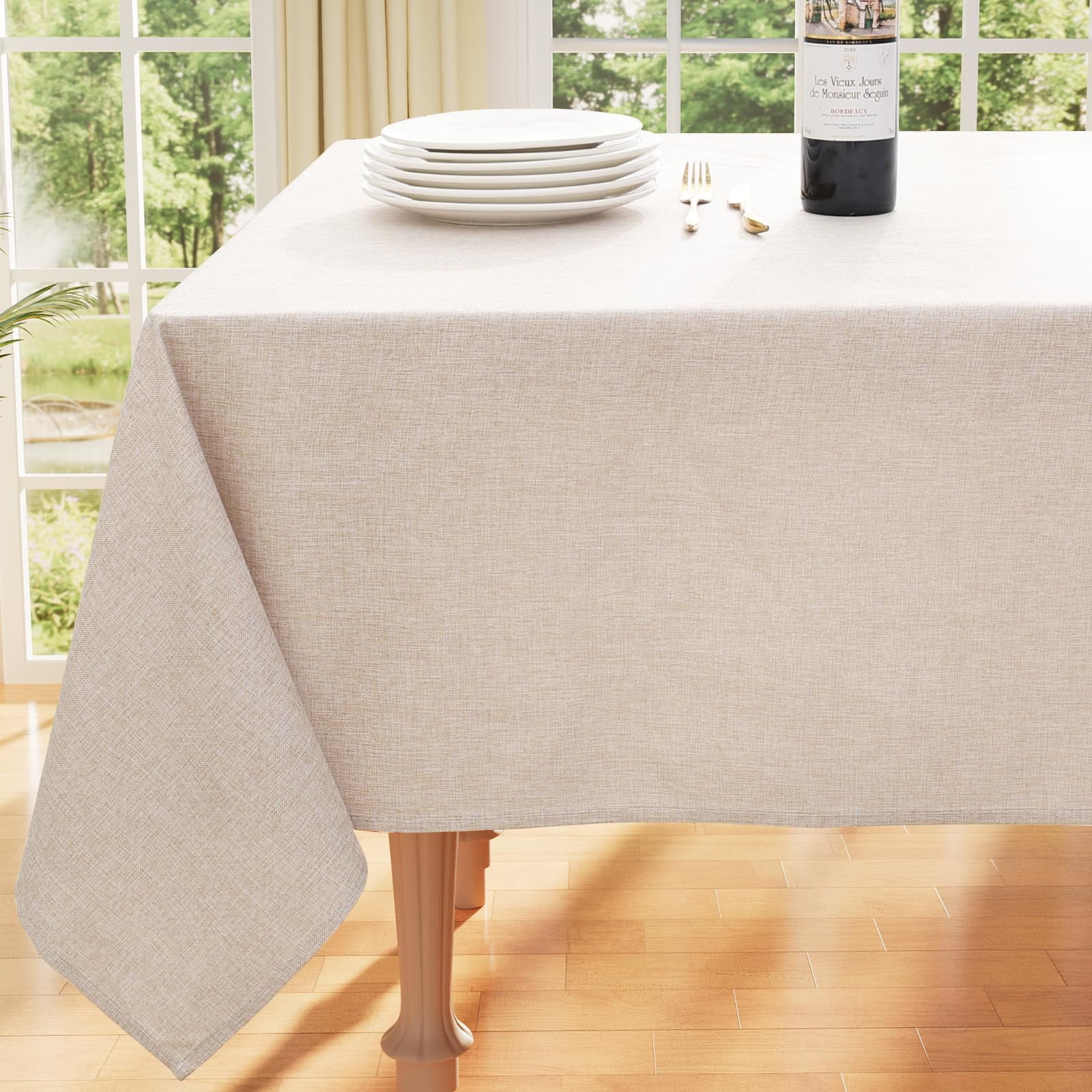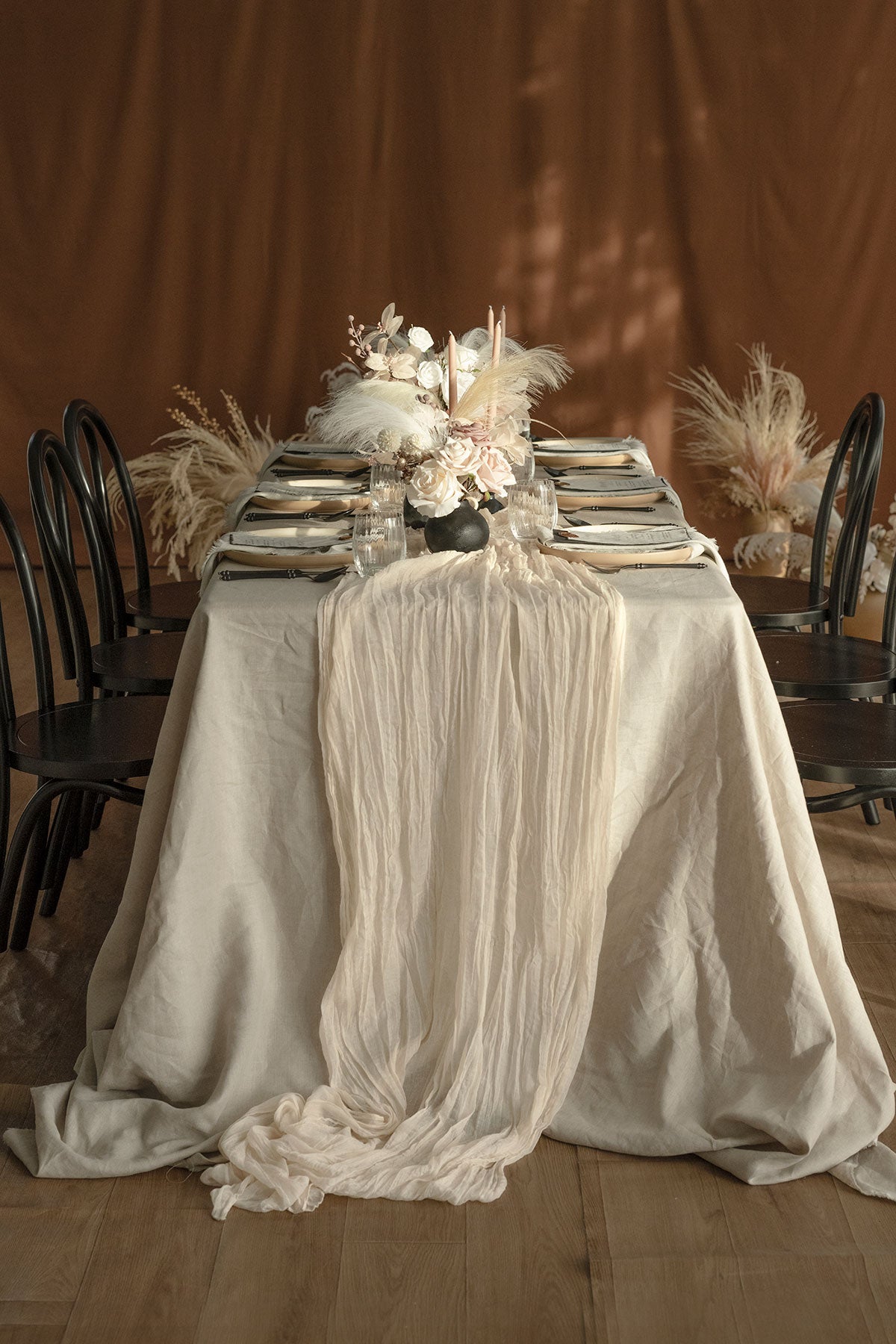Trendy Table Runner Ideas: Transform Your Dining Experience
Wiki Article
Linen Fabric Advancements: Discovering Modern Trends and Creative Applications in Design and Textile Sector
From lasting manufacturing techniques to innovative weaving modern technologies, the evolution of bed linen is improving the landscape of the fabric market. As we delve into the worlds of innovative layout applications and the development of bed linen blends and hybrid fabrics, a new phase unfolds in which linen's role in future textile developments takes facility phase.Sustainable Practices in Linen Manufacturing
Sustainable techniques in bed linen manufacturing have become significantly crucial in the fabric market's efforts to decrease ecological effect and promote moral sourcing techniques. Linen, an all-natural fiber originated from the flax plant, offers an array of benefits such as biodegradability, breathability, and longevity. However, typical techniques of linen manufacturing can include substantial water usage, chemical use, and energy-intensive procedures.To deal with these obstacles, lots of textile manufacturers are embracing lasting practices throughout the bed linen production procedure. This consists of sourcing flax from natural farms that avoid harmful chemicals and chemicals, executing water-efficient retting strategies to extract fibers from the flax stalks, and using environment-friendly dyes and finishes. Furthermore, some firms are purchasing sustainable power sources to power their production centers and lowering waste with recycling and upcycling campaigns.
Technical Improvements in Bed Linen Weaving
With the expanding emphasis on sustainable methods in bed linen production, the textile market is currently observing a surge in technological improvements especially aimed at changing the art of linen weaving. These developments are improving the means bed linen textiles are produced, providing boosted performance, quality, and imagination in weaving strategies.Among the vital technological developments in linen weaving is the combination of digital looms. These innovative looms are furnished with software that permits elaborate and complicated styles to be woven with accuracy. By digitizing the weaving procedure, manufacturers can achieve greater consistency and accuracy in their bed linen fabrics.
Additionally, improvements in thread spinning technology have enabled the manufacturing of finer and even more sturdy bed linen threads - table cloths. This leads to softer and smoother linen fabrics that retain their high quality even after numerous usages and washes
Additionally, the growth of eco-friendly dyeing procedures and surfaces for linen fabrics is obtaining grip. These sustainable techniques not just decrease the ecological impact however likewise accommodate the raising consumer demand for morally produced fabrics.
Creative Style Applications for Linen
Cutting-edge artistic techniques are increasingly shaping the creative layout applications for bed linen in the textile market. Bed linen's natural aesthetic charm and capacity to blend with other fabrics make it a preferred selection for creating distinct garments and devices that provide to the environmentally aware customer.Additionally, designers are try out bed linen in home decor, utilizing its durable and breathable nature to craft fashionable home furnishings such as curtains, bedding, and upholstery. his response The structure and drape of bed linen bring a feeling of refinement and comfort to interior areas, adding a touch of sophistication to modern-day homes.

Linen Blends and Hybrid Fabrics

Crossbreed materials, on the various other hand, take the concept of mixing an action additionally by integrating extra elements such as metal threads, recycled materials, or conductive fibers. These cutting-edge fabrics not only increase the layout possibilities but also present functional aspects like conductivity, antimicrobial residential or commercial properties, or enhanced durability. Crossbreed fabrics are significantly being used in various sectors, including fashion, indoor design, and technological textiles, where the need for multifunctional materials gets on the rise.
Bed linen's Role in Future Fabric Innovations

In the world of future fabric developments, bed linen is anticipated to be a principal in the growth of sophisticated useful textiles. Researchers and designers are exploring methods to improve bed linen's inherent qualities with technical innovations, such as incorporating wise fabrics, nanotechnology, and efficiency coatings. These innovations aim to raise linen's efficiency get more features, making it ideal for a broader range of applications, from activewear to protective clothes.
Additionally, the mix of bed linen with other natural or synthetic fibers opens countless possibilities for producing novel textiles with special properties and functionalities. By leveraging linen's attributes and exploring innovative blends, the fabric sector is poised to introduce interesting growths that accommodate advancing consumer needs and sustainability requirements.
Verdict
To conclude, the expedition of lasting methods, technological developments, imaginative layout applications, bed linen blends, and its function in future textile innovations highlight the continual advancement of bed linen fabric in the modern layout and fabric market. With a concentrate on technology and creative thinking, the convenience and environment-friendly nature of bed linen make it a useful material for producers and designers alike, leading the way for more growths and developments in the area of fabrics.As we delve right into the realms of creative layout applications and the introduction of linen blends and crossbreed materials, a brand-new chapter unravels in which linen's role in future fabric innovations takes facility stage.
Discovering the fusion of bed linen with other textiles has led to the emergence of cutting-edge blends and crossbreed textiles in the contemporary textile industry. Bed linen blends use an one-of-a-kind mix of the characteristics of linen with those of various other fibers, resulting in reference fabrics that have enhanced residential or commercial properties such as boosted longevity, boosted draping, and minimized wrinkling.The development of linen blends and crossbreed textiles has set the stage for Linen to play a crucial duty in driving future textile innovations.In the realm of future fabric advancements, bed linen is expected to be a crucial player in the development of sophisticated functional textiles.
Report this wiki page